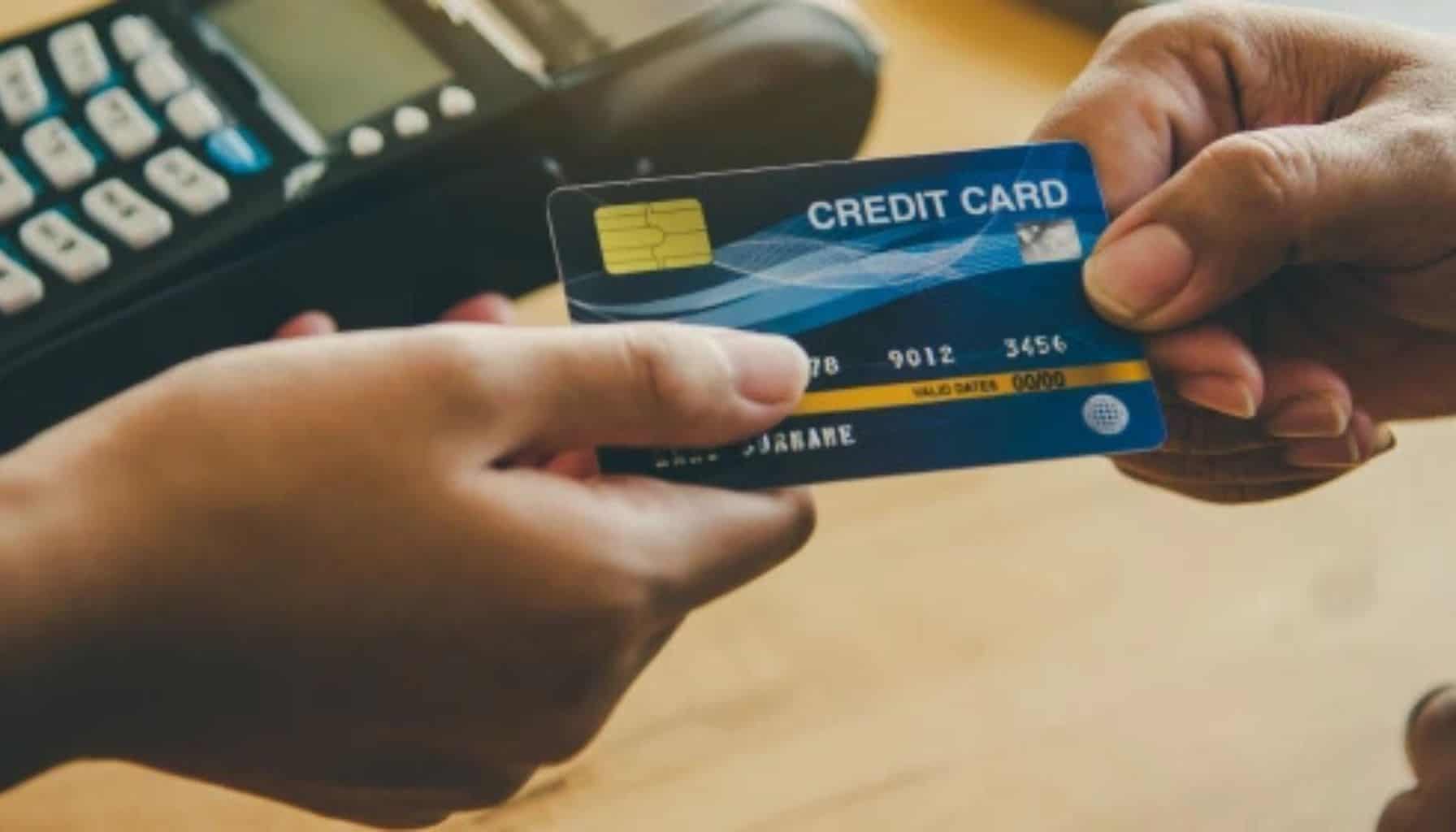
By dinesh March 27, 2025
When it comes to processing credit and debit card payments, businesses have multiple options. Two of the most common methods are swipe transactions and keyed-in credit card transactions—and while they may seem similar, they have distinct differences that impact security, cost, and efficiency.
Understanding the pros and cons of each transaction type is crucial for businesses looking to streamline payments, reduce costs, and enhance security. In this guide, we’ll break down the differences, benefits, and potential risks of both swipe and keyed-In credit card transactions to help you make informed decisions for your business.
Understanding Swipe and Keyed-In Credit Card Transactions
When making a payment, there are different ways a transaction can be processed, each with its own level of security and convenience. Two common methods are swipe credit card transactions and keyed-In credit card transactions.
What Is a Swipe Transaction?

A swipe transaction occurs when a customer physically interacts with a payment terminal using their credit or debit card. This can be done in several ways. Traditional card swiping involves running the card’s magnetic stripe through a reader to process the payment. Another method is the chip insert (EMV), where instead of swiping, the card is inserted into the machine, allowing the chip to be read for added security.
Additionally, contactless payments, or tap-to-pay, use Near Field Communication (NFC) technology, enabling customers to simply tap their card or smartphone on a compatible payment terminal. Because the card—or its digital version stored in a mobile wallet—is physically present during the transaction, swipe transaction are generally considered more secure than manually entered payments.
What Is a Keyed-In Credit Card Transactions?

A keyed-In credit card transactions, on the other hand, occurs when a merchant manually enters a customer’s card details instead of swiping or inserting the card. This method is commonly used in situations where the physical card is not available. For example, in phone or remote payments, businesses manually input a customer’s card information to process an order taken over the phone.
Similarly, online purchases require customers to enter their card details themselves when completing a transaction on a website. While this method offers convenience, it also carries a higher risk of fraud and errors, as there is no way to verify the physical presence of the card or authenticate the user as securely as a swipe or chip transaction.
Both methods have their place in modern commerce, but businesses must balance ease of payment with security measures to protect both themselves and their customers.
Key Differences Between Swipe and Keyed-In Credit Card Transactions

A swipe transaction requires the physical presence of a card at the time of payment. Whether the card is swiped through a reader, inserted into a chip-enabled terminal, or tapped using contactless technology, the transaction is processed directly through the payment system. This method is not only faster but also offers enhanced security, as the card’s built-in technology helps protect customer payment information.
In contrast, a keyed-in credit card transactions occurs when a merchant manually enters the card details instead of physically processing the card. This typically happens when the customer is not present, such as during phone orders or online purchases. While this method provides convenience, it is generally slower and carries a higher risk of fraud and human error, as there is no way to verify the card’s authenticity in real-time.
Swipe transaction are more secure, efficient, and reliable because they involve direct card interaction, while keyed-in credit card Transactions, though useful in certain scenarios, pose greater security risks and are more susceptible to errors.
Advantages of Keyed Card Transactions

Keyed card transactions offer a practical solution for businesses that need to accept payments remotely or when traditional card readers aren’t an option. Whether handling phone orders, processing invoices, or dealing with technical issues, this method ensures that sales can continue without disruption. Here’s why keyed transactions are beneficial:
1. Flexibility in Payment Processing
Not every transaction happens face-to-face, and not every card swipes or taps correctly. Keyed transactions allow businesses to manually enter payment details when a card’s chip or magnetic stripe is damaged, ensuring that customers can still complete their purchases. This is particularly useful for service-based businesses, hotels, and professional firms where customers may pay remotely.
2. Expanding Customer Reach
A business that relies solely on in-person transactions limits its potential customer base. With keyed transactions, businesses can accept payments from customers who place orders over the phone, through email, or via mail-in invoices. This is especially valuable for industries like e-commerce, hospitality, healthcare, and subscription services, where remote payments are common. By offering a way to pay without being physically present, businesses can serve more customers and increase revenue.
3. Keeping Sales Flowing During Downtime
Technical glitches, internet outages, or equipment failures can bring a point-of-sale system to a standstill. In such cases, businesses that rely solely on card-present transactions may lose out on sales. Keyed transactions provide a backup, allowing merchants to continue processing payments manually until technical issues are resolved. This ensures that cash flow remains steady, even when unexpected challenges arise.
4. Supporting Recurring and Invoice-Based Payments
Many businesses, such as freelance professionals, subscription services, and B2B companies, rely on invoicing rather than immediate, in-person payments. Keyed transactions make it easy to charge customers remotely by entering their payment details directly into a virtual terminal or payment system. This simplifies billing and reduces the need for customers to take extra steps to complete a transaction.
5. Enhancing Customer Convenience
For customers, keyed transactions mean they can make purchases without being physically present or without having to use online payment portals. This is especially useful in scenarios where a quick phone call or email is the easiest way to complete an order. Businesses that offer this option can provide a smoother, more flexible experience for their customers.
While keyed transactions may have slightly higher processing fees due to increased fraud risks, their ability to keep businesses running smoothly, reach more customers, and provide convenient payment options makes them a valuable tool for many industries.
Drawbacks of Keyed Card Transactions
While keyed card transactions offer flexibility and convenience, they also come with certain risks and costs that businesses should carefully consider. Here are some of the key drawbacks:
1. Higher Processing Fees
One of the biggest downsides of keyed transactions is the increased cost. Payment processors charge higher fees for these transactions because they carry a greater risk of fraud and chargebacks. Unlike card-present transactions, where security features like EMV chips and contactless payments help reduce risk, manually entered transactions rely solely on the accuracy of the provided information. For businesses that frequently process keyed transactions, these higher fees can add up and impact profitability.
2. Increased Fraud Risk
Keyed transactions are inherently less secure than card-present payments because there is no physical verification of the card. This makes it easier for fraudsters to use stolen card details for unauthorized purchases. Since the merchant is manually entering the card number, there’s no way to confirm that the customer actually has the card in their possession. This type of fraud can lead to chargebacks, disputes, and financial losses for businesses.
3. Greater Chargeback Liability
When fraud or disputes occur with a keyed transaction, the merchant is often held responsible. Many financial institutions shift liability to the business when a transaction is processed with card-not present transaction method. This means that if a customer claims they didn’t authorize a payment, the merchant may have to refund the amount without recourse. In contrast, card-present transactions with EMV chips or contactless payments often shift liability to the issuing bank, reducing the merchant’s exposure to financial losses.
4. Potential for Human Error
Since keyed transactions require manual data entry, mistakes can happen. A mistyped card number, incorrect billing address, or expiration date error can lead to declined transactions or processing delays. These errors can frustrate customers and create inefficiencies in payment processing. In high-volume businesses, frequent manual entry mistakes can result in lost sales and wasted time resolving issues.
5. Slower Transaction Processing
Compared to card-present payments, where a simple tap or chip insert completes the transaction in seconds, keyed transactions take longer. Manually entering card details, verifying billing information, and handling potential errors can slow down the checkout process. In busy retail or service environments, this extra time can create bottlenecks and inconvenience customers.
6. Limited Fraud Protection Compared to Online Payments
While online payments also involve remote transactions, they often include built-in security measures like CVV codes, address verification (AVS), and two-factor authentication. In contrast, some keyed transactions may not have the same level of protection, depending on how the payment is processed. This can make them an easier target for fraudsters compared to transactions handled through secure e-commerce gateways.
Advantages of Swipe Transactions

Swipe transaction are one of the most common ways to process credit and debit card payments, offering benefits for both customers and businesses. Since these transactions happen in person, they come with added security and efficiency. Here’s why swiping a card can be beneficial:
1. Increased Security for Transactions
Because swipe transaction require the physical presence of both the card and the cardholder, they are generally more secure than remote payment methods. Unlike keyed transactions, where fraudsters can use stolen card details, swiping helps verify that the actual card is being used, reducing the chances of fraudulent activity. Many payment processors also have built-in security measures like encryption to protect transaction data.
2. Fewer Errors and Faster Checkout
Swiping a card is quick and minimizes the risk of human error. Unlike keyed transactions that require manual entry of card details, a simple swipe instantly transmits the necessary payment information. This reduces the chances of mistyped numbers, incorrect expiration dates, or mismatched billing addresses, making the checkout process smoother and more efficient.
3. Lower Processing Fees
Because swipe transaction are considered lower risk, payment processors usually charge lower transaction fees compared to manually entered payments. Since there’s less fraud exposure and fewer chargeback claims, businesses can save money on processing costs. This makes swipe payments a cost-effective option for businesses that handle in-person transactions frequently.
While swiping is a reliable payment method, it’s not without its downsides.
Disadvantages of Swipe Transactions
Despite their advantages, swipe transactions still have vulnerabilities that businesses and consumers should be aware of.
1. Susceptibility to Fraud and Skimming
While swiping is generally safer than keyed transactions, it’s still not immune to fraud. Card skimming devices, often discreetly attached to payment terminals, can steal card information during a swipe transaction. Hackers can use this stolen data to create counterfeit cards or make unauthorized purchases. This makes it crucial for businesses to use secure, up-to-date card readers and regularly check for tampering.
2. Risk from Outdated Technology
Swipe transactions rely on magnetic stripes, which are considered less secure than newer EMV chip technology. Many modern cards come with both a chip and a magnetic stripe, but chip transactions offer better encryption and fraud protection. Some businesses are even moving away from swipe transactions entirely in favor of chip and contactless payments, which makes swiping an increasingly outdated method.
3. Limited Protection Against Disputes
If a customer disputes a charge from a swipe transaction, businesses may face a higher risk of chargebacks compared to chip transactions. Since swiping doesn’t offer the same level of verification as chip-and-PIN or contactless payments, it can be harder for merchants to prove that a transaction was authorized, potentially leading to lost revenue.
Conclusion
Swipe transactions offer security, speed, and lower costs, making them ideal for in-person payments. keyed-In credit card transactions provide flexibility for remote sales but come with higher fraud risk and fees. Businesses should balance both methods wisely, using swipe and chip transactions whenever possible while implementing security measures for manual entries.